Hola una vez más.
Hi again.
Hi again.
En el siguiente enlace podéis ver nuestros próximos viajes fotográficos y de observación de aves y mamíferos nacionales y al extranjero. Espero que os gusten y os animéis a venir conmigo. Una experiencia que nunca olvidareis.
In the following link you can see our next national and foreign Birds and Mammals photographic and observation trips. I hope you like them and I encourage you to come with me. An experience that you will not forget.
En esta entrada os muestro lo que pude fotografiar en un viaje a la carta del 19 al 20 de abril por los Llanos de Cáceres y el Parque Nacional de Monfragüe.
In this post I show you what I was able to photograph on an à la carte trip from April 19 to 20 through the Llanos de Cáceres and the Monfragüe National Park.
El tiempo fue muy bueno aunque algo caluroso para esta época del año.
The weather was very good, although a bit hot for this time of year.
The weather was very good, although a bit hot for this time of year.
Os he separado las aves vistas por los días de la visita.
I have separated the birds seen during the days of the visit.
19 de abril: Llanos de Cáceres
April 19th: Caceres plains
April 19th: Caceres plains
En las múltiples charcas que hay en los Llanos de Cáceres se pueden ver algunas aves acuáticas. En este caso se trata de un macho de ánade friso (Anas
strepera).
In the multiple ponds that exist in the Llanos de Cáceres you can see some waterfowl. In this case it is a male Gadwall.
La mayor parte del territorio de los Llanos de Cáceres son fincas ganaderas valladas y por eso hay bastantes fotos que están tomadas en ellas. Es una pena que aves tan bonitas tengan unos posaderos tan feos. En la foto una cogujada común (Galerida
cristata). Como en todos los alaudidos, fijaos en lo larga que tienen la uña del dedo posterior.
Most of the territory of the Llanos de Cáceres are fenced cattle farms and that is why there are quite a few photos that are taken in them. It is a pity that such beautiful Birds have such ugly perches. In the photo, a Crested Lark. As in Larks, look at how long the nail of the posterior finger is.
En un cercón lleno de ovejas había varios buitres leonados (Gyps
fulvus) y tres buitres negros (Aegypius
monachus). Me imagino que alguna oveja había parido y estaban allí después de haberse comido la placenta.
In a fence full of Sheep there were several Griffon Vultures and three Black Vultures. I imagine that some sheep had given birth and they were there after having eaten the afterbirth.
Uno de ellos estaba anillado con una anilla cerrada de color amarillo con los dígitos BR5 ó 3R5, no lo pude ver bien.
One of them was ringed with a yellow closed ring with the digits BR5 or 3R5, I couldn't see it well.
Había muchas collalbas grises (Oenanthe
oenanthe) aun en plumaje de invierno. Solo fotografié a los machos al ser más llamtivos.
There were many Northern
Wheatear still in winter plumage. I only photographed males as they were more conspicuous.
A los mochuelos europeos (Athene
noctua) les gusta anidar en cajas nido.
Little Owls (Athene noctua) like to nest in nest boxes.
Escribano triguero (Emberiza calandra).
Corn Bunting.
También había bastantes conejos silvestres.
There were also quite a few wild Rabbits.
Llegamos a ver tres zorros rojos (Vulpes vulpes).
We managed to spot three Red Foxes.
También vimos varios ejemplares de aguilucho cenizo (Circus pygargus). El de la foto es una hembra.
We also saw several specimens of Montagu's Harrier. The one in the photo is a female.
Vimos varias tarabillas norteñas (Saxicola
rubetra) en paso migratorio hacia el norte. En la foto un bonito macho.
We saw several Whinchat migrating north. In the photo a nice male.
En esta otra foto una bonita hembra.
In this other photo a pretty female.
Una vaca de raza retinta. Me encanta el color que tienen.
A retinta breed cow. I love the color they have.
Se veían muy pocas avutarda euroasiática (Otis
tarda).
Very few Great Bustard were seen.
Sin embargo, había muchísimas calandrias comunes (Melanocorypha
calandra).
However, there were plenty Calandra
Lark.
Una hembra de tarabilla europea (Saxicola rubicola).
A Common
Stonechat female.
En otra de las charcas pudimos ver a un grupo de espátulas comunes (Platalea
leucorodia) en plumaje reproductor y en migración.
In another of the ponds we could see a group of Eurasian
Spoonbill in breeding plumage and in migration.
Una culebrera europea (Circaetus
gallicus).
A Short-toed
Eagle.
Vimos varios machos de sisones comunes (Tetrax
tetrax) aunque todos bastante lejos.
We saw several male little bustards (Tetrax tetrax) although all quite far away.
Una de las aves que abunda en los Llanos de Cáceres a pesar de su franca disminución es la carraca europea (Coracias
garrulus). Ello es debido a la gran labor que ha hecho la junta de Extremadura colocando muchas cajas nidos para que esta especie pueda seguir reproduciéndose.
One of the birds that abounds in the Llanos de Cáceres despite its clear decline is the European Roller (Coracias garrulus). This is due to the great work that the Extremadura Government has done, placing many nest boxes so that this species can continue reproducing.
Son una maravilla.
They are wonderful.
En vuelo es cuando se puede apreciar mejor la belleza de su plumaje.
In flight is when you can best appreciate the beauty of its plumage.
También son muy bonitas vistas de espalda.
They are also very nice their backs.
La verdad es que vimos menos águilas calzadas (Aquila
pennata) que las que yo me esperaba. Igual es mi impresión pero cada año veo menos. En la foto un morfo claro.
The truth is that we saw fewer Booted Eagle than I expected. Maybe is my impression but every year I see less. In the photo a pale morph.
Y esta otra un morfo oscuro.
And this one a dark morph.
Otra ave que está en franca regresión es la perdiz roja (Alectoris
rufa). Hace algunos años casi ni las mirabas y ahora cada vez que veo alguna me llevo una alegría.
Another Bird that is clearly in decline is the Red-legged
Partridge. A few years ago you almost didn't even look at them and now, every time I see one, I'm happy.
En el río Alagón había varios ruiseñores comunes (Luscinia
megarhynchos) cantando a pleno pulmón, pero ninguno quiso posar decentemente para la cámara.
In the Alagón river there were several Rufous
Nightingale singing, but none wanted to pose decently for the camera.
Esta lagartija colilarga (Psammodromus algirus) llamo mi atención pues estaba con parte de sus patas levantadas evitando quemarse con el calor que hacía en el asfalto.
This Algerian Psammodromus caught my eye because it was with part of its legs raised to avoid getting burned by the heat on the asphalt.
Campeando en busca de presas vimos tres águilas imperiales ibéricas (Aquila
adalberti). En la foto dos pajizos.
Flying in search of prey we saw three Spanish
Imperial Eagle. In the photo inmatures.
19 de abril: Llanos de Cáceres y Monfragüe
April 19th: Caceres plains and Monfrague
April 19th: Caceres plains and Monfrague
Como no habíamos visto ninguna avutarda euroasiática (Otis
tarda) haciendo la rueda decidimos que, como las grandes rapaces no comienzan a volar hasta que hay térmicas, íbamos a probar a ver si podíamos ver el espectáculo de los machos en cortejo. La suerte nos acompaño y pudimos ver a varios machos haciendo la rueda.
As we hadn't seen any Great Bustard displaying, we decided that, since large raptors don't start flying until there are thermals, we were going to try and see if we could spot the spectacle of courting males. Luck was with us and we could observe several males.
En este vídeo podéis ver a un macho haciendo la rueda.
In this video you can see a male displaying.
Un colorido abejaruco europeo (Merops
apiaster). No se puede ser más bonito.
A colorful European bee-eater (Merops apiaster). It cannot be prettier.
Sobre las 10:30 ya habíamos llegado a Monfragüe. En solo una foto se pueden ver las tres especies de buitres que se pueden observar en el Parque. De arriba a abajo, alimoche común (Neophron
percnopterus) buitre negro (Aegypius
monachus) y buitre leonado (Gyps
fulvus).
Around 10:30 we had already arrived at Monfrague. In just one photo you can see the three species of Vultures that can be seen in the Park. From top to bottom, Egyptian Vulture, Black Vulture and Griffon Vulture.
Alimoche común (Neophron percnopterus).
Egyptian Vulture.
Ya había un adulto en el mismo nido de todos los años. Esperemos que este año también tengan suerte y saquen algún pollo.
There was already an adult in the same nest every year. Let's hope that this year they are also lucky and have some chicks.
Los búhos reales (Bubo bubo) de la Portilla del Tiétar tenía ya al menos dos crías. En la foto se puede ver a uno de los progenitores en la parte derecha del nido. Las crías estaban echadas y solo se veían cuándo s movían.
The Eagle Owls at Portilla del Tiétar already had at least two chicks. In the photo you can see one of the parents on the right side of the nest. Chicks were lying down and could only be seen when they moved.
Vimos un adulto de águila imperial ibérica (Aquila
adalberti) pero a bastante distancia.
We did see an adult Spanish
Imperial Eagle but at a distance.
Este chochín paleártico (Troglodytes
troglodytes) no paraba de cantar escondido tras la rama de una encina.
This Eurasian Wren did not stop singing hidden behind the branch of a Holm Oak.
Por el observatorio andaba una pareja de escribano montesino (Emberiza
cia).
Close to the observatory it was a pair of Rock Bunting.
También vimos varias cigüeñas negras (Ciconia
nigra).
We also saw several Black Storks.
Las iridiscencias de su plumaje son espectaculares.
The iridescence of its plumage is awesome.
Continuando con nuestro recorrido pudimos observar una pareja de águila perdicera (Aquila
fasciata). En esta foto el macho que está anillado con una anilla de color azul pero que no pude ver su numeración.
Continuing with our tour we were able to observe a pair of Bonelli's Eagles. In this photo the male that is ringed with a blue ring but I could not see its numbering.
Y al poco rato apareció la hembra que no está anillada.
And after a while the female that is not ringed appeared.
Son majestuosas.
They are majestic.
Un macho de curruca rabilarga (Sylvia undata).
A male Dartford Warbler.
Ya habían llegado algunas parejas de vencejos reales (Apus
melba) al puente cercano a la fuente del Francés. Se estima que esta especie puede recorrer en un solo día de manera rutinaria entre 600 y 1.000 kilómetros.
Some Alpine Swift had already arrived at the bridge near the Fuente del Francés.It is estimated that this species can routinely travel between 600 and 1,000 kilometers in a single day.
El penúltimo lugar que visitamos fue el Salto del Gitano. La especie más abundante en estos observatorios son los buitres leonados (Gyps
fulvus).
The penultimate place we visited was the Salto del Gitano. The most abundant species in these observatories are Griffon Vultures.
Me extraño ver que este buitre había perdido todas las plumas de su cola.
I am surprised to see that this vulture had lost all its tail feathers.
Los 3 nidos visibles de las cigüeñas negras (Ciconia
nigra) estaban ocupados. Las tres parejas estaban incubando.
The 3 visible nests of black storks were occupied. All three pairs were incubating.
También había algunos roqueros solitarios (Monticola
solitarius). En a foto un macho.
There were also some Blue Rock
Thrush. In the photo a male.
Y por último subimos hasta el castillo de Monfragüe para ver volar los buitres leonados (Gyps
fulvus) a nuestra altura. En la foto un cuervo grande (Corvus corax).
And finally we went up to the castle of Monfragüe to see Griffon Vultures flying at our height. In the photo a Common
Raven.
Un milano negro (Milvus
migrans).
A Black Kite.
Algunas fotos que pude tomar de los buitres. Una pena que pasaban todos a contraluz.
Some photos I was able to take of the Vultures. A pity that they were all passing at backlit.
Y para terminal el viaje visitamos un nido de cigüeña blanca (Ciconia
ciconia) que en su parte inferior había nidos de gorrión moruno (Passer
hispaniolensis) y gorrión vulgar (Passer domesticus).
And to end the trip we visited a white stork (Ciconia ciconia) nest that in its lower part there were nests of Spanish
Sparrow and House
Sparrow.
Si queréis suscribiros a este blog de los viajes que hacemos pincha en el siguiente enlace: Suscribirse y haz clic en ¿ Quieres suscribirte a nuestro blog?
If you want to subscribe to this post about the trips we do, click on the following link: Susbcribe and click on: Do you want to subscribe to our blog?
Espero que os haya gustado y hasta pronto.
I hope you like it and see you soon.






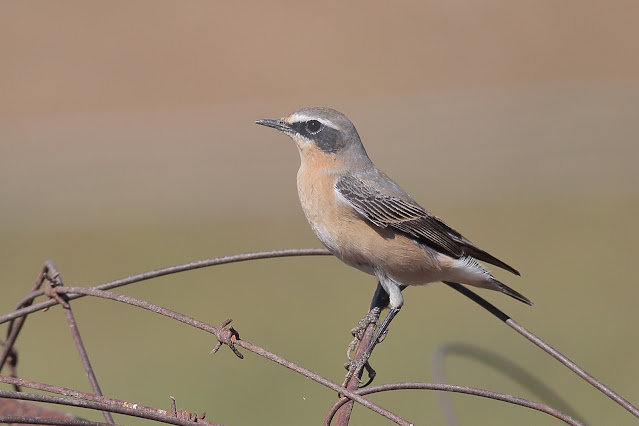


























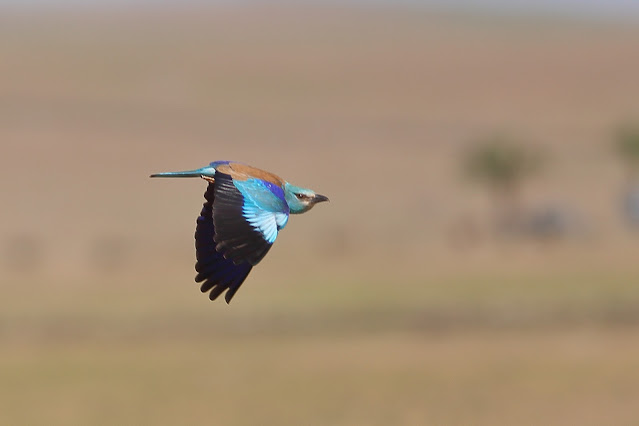


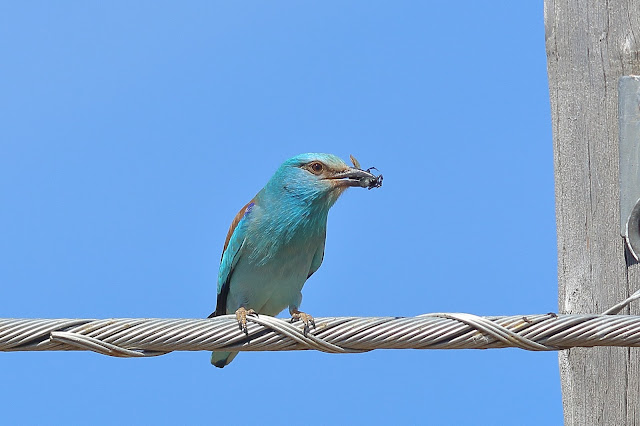
















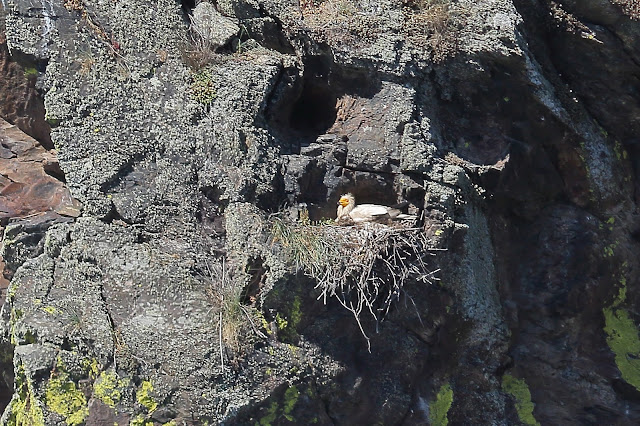















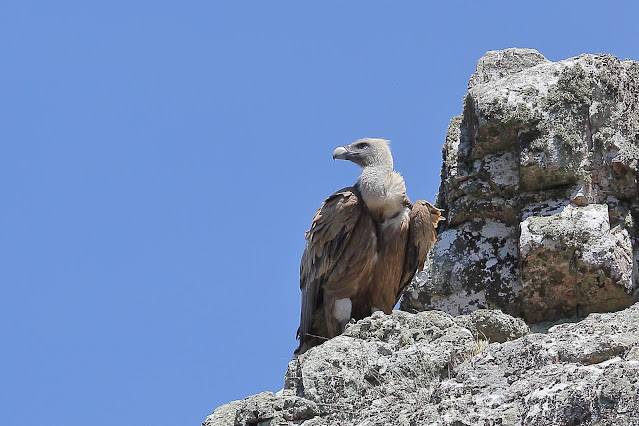













No hay comentarios:
Publicar un comentario